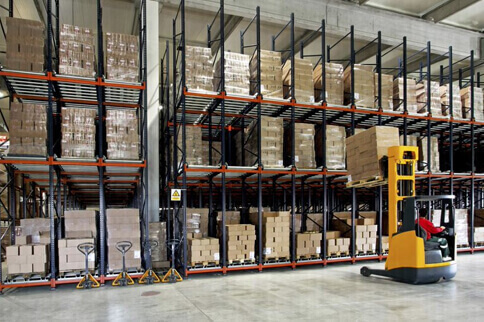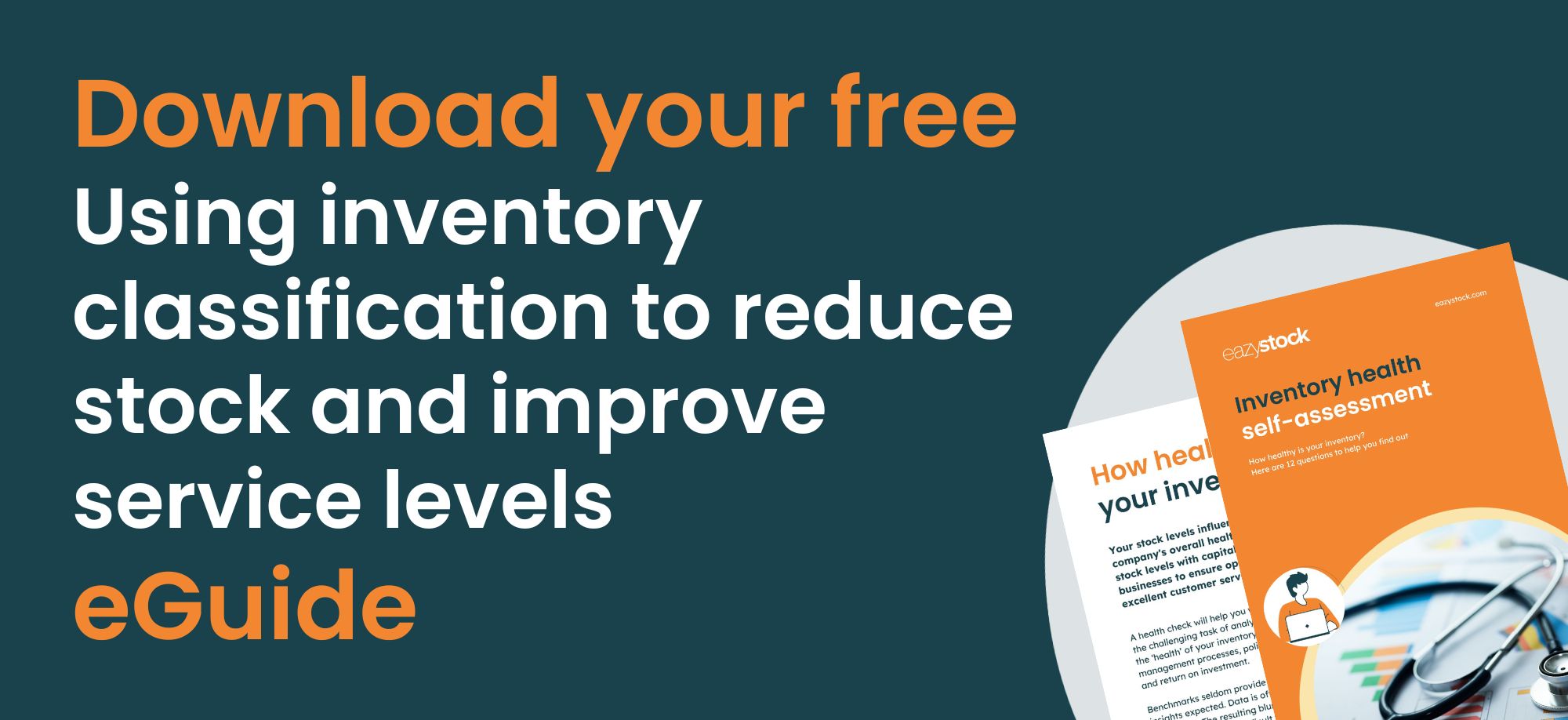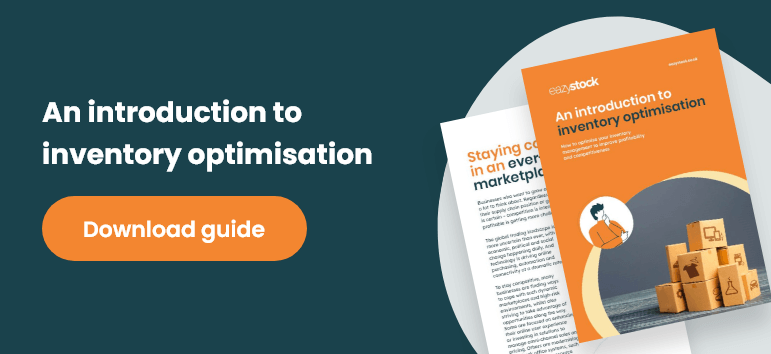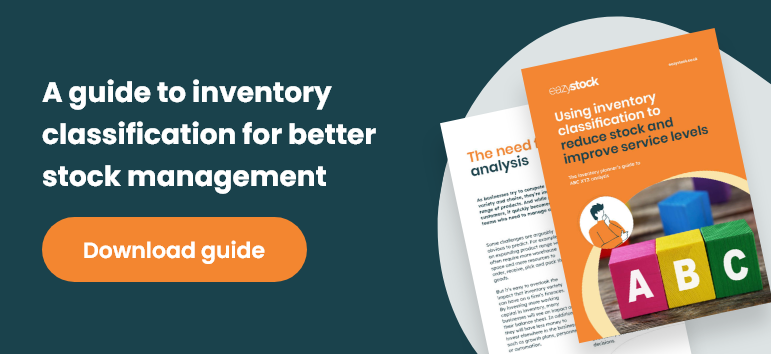What is stock availability, and how can you improve it?
Improving stock availability – without carrying excess stock
For many businesses, stock availability is critical to delivering excellent customer service. Achieving high levels of stock availability without holding high inventory levels is challenging – but it is possible. The secret is to optimise…
Many businesses fear stockouts – and rightly so. Ten years ago, it might have been OK to ask your customer to wait a few weeks until you got their product in stock, but today you’re likely to lose that customer to another supplier if you aren’t able to deliver. After all, your competitor is just a click away.
Faced with the risk of stockouts, a damaged reputation and reduced profits, some businesses will resort to stocking high quantities of every SKU to meet demand. This is a terrible idea for three reasons:
1. This will negatively impact your inventory turnover ratio.
2. It will tie up working capital and increase carrying costs
3. It will increase the risk of excess and obsolete inventory
Instead, you need to find ways to fulfil orders without maxing out on stock. This is possible when introducing inventory optimisation techniques to your inventory management practices. Inventory optimisation methods consider supply and demand volatility when setting your demand forecasts, stock levels and replenishment parameters.
Improving stock availability with inventory optimisation
The first stage of inventory optimisation is to set accurate demand forecasts so you only carry the products you need to meet demand. Read our blog on demand forecasting or download our eGuide for more information.
The next stage is to optimise your stock levels. There’s no point carrying high volumes of every item in your warehouse – this will be a drain on your working capital. Instead, you need to identify the most valuable inventory items to your business and prioritise those. One way to do this is to use an inventory classification model. ABC analysis is a simple way to segment your stock based on its value to the business. The aim is to prioritise the availability of category ‘A’ products with a good profit margin, versus ‘B’ that are less valuable and finally ‘C’ products. Our blog on ABC classification offers more information on this topic, or you can download our eGuide below.
For more sophisticated stocking policies, you can turn to inventory planning software, such as EazyStock. EazyStock will analyse every SKU based on a number of variables, such as demand type, demand volatility, pick frequency and cost to sell (or profitability). It then recommends what to stock based on these parameters. For example, it often makes no sense to carry large numbers of expensive items with volatile demand when investing in cheaper, fast-moving goods will help ensure stock availability and keep inventory turnover high.
Use service levels to measure stock availability
The next step to ensuring stock availability is to set target service levels. Service levels measure whether an inventory item was in stock when it was requested for delivery, leading to a completely fulfilled order, e.g. whether demand (or sales orders) could be met from the inventory on hand.
The target service level you set for each item in your warehouse should be based on its forecasted demand and demand type, e.g. if you have fast-moving products where demand is consistently high, then you might set a high service level of 98% or above. Whereas for slower-moving products with intermittent demand, you may set lower service levels, such as 90%.
Your service levels are, therefore, a measure of stock availability.
Once you have set your service levels, you can set your stocking rules to lower your inventory but still ensure availability.
Monitoring your service level as an inventory management KPI helps you ensure you can completely fulfil every order and prevent stockouts.
Review your stock replenishment rules

Inventory replenishment planning is also critical to ensuring stock availability without over-ordering. Determining your order frequencies, order quantities and safety stock levels to account for demand and supply variables means you can reduce stock but still achieve high target service levels.
However, basic inventory replenishment processes (often managed in spreadsheets or used by ERP systems) are very one-dimensional. Reorder point calculations are based on a fixed order cycle or when stock hits a specific trigger point. Reorder quantities are either the same amount every time or based on filling up to a minimum or maximum warehouse capacity.
The Economic Order Quantity methodology is more advanced, taking carrying and ordering costs into account. But none of these methods considers supply and demand variables.
With inventory optimisation software, you can go one step further and factor in:
- Demand forecasts – so you’re ordering to the demands of your customers
- Supplier lead times – so you’re taking account of supplier constraints, national holidays etc
- Cost-effective order quantities – so you’re weighing up the cost of carrying and opportunity costs against cheap bulk buys
- Safety stock levels – so you never end up out of stock
Stock availability is an achievable goal
Many stock availability issues result from not accounting for supply and demand volatility.
If you can stock the right goods in the right amounts to meet demand, you’ll maximise your stock turnover rate. As goods move quickly in and out of the warehouse, you can keep cash flowing and prevent excess and obsolete stock. At the same time, you’ll have optimised stock levels set to ensure high service levels and stock availability targets.











